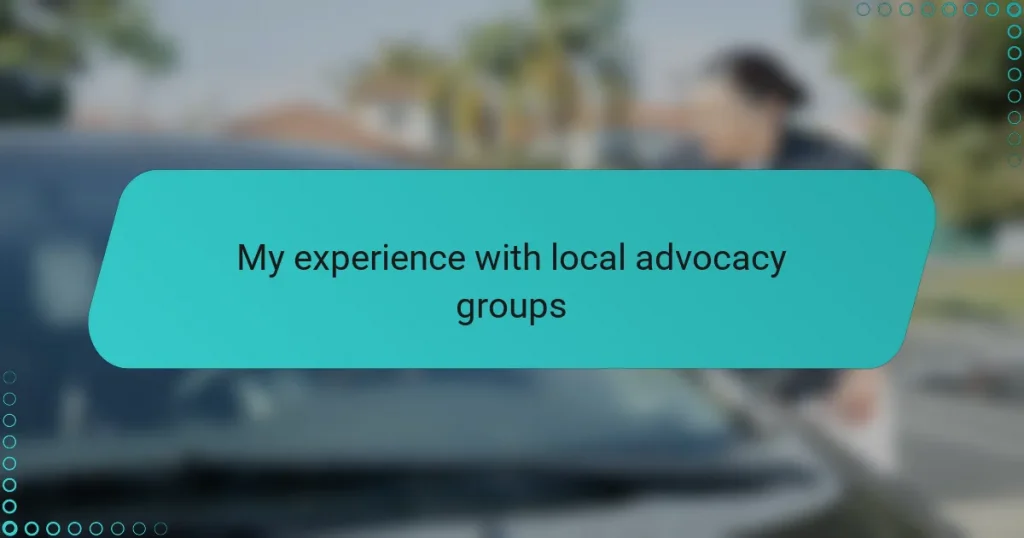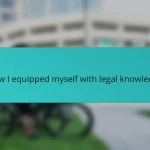Key takeaways
- Legal advocacy groups focus on personal connections, listening to individuals’ stories to empower and advocate for justice.
- Effective involvement requires active participation, communication, and the willingness to navigate challenges such as bureaucracy and emotional burden.
- Collaboration among diverse voices enhances advocacy efforts, fostering stronger community engagement and impactful change.
- Patience and persistence are crucial, as meaningful progress often comes from steady, behind-the-scenes work rather than immediate results.
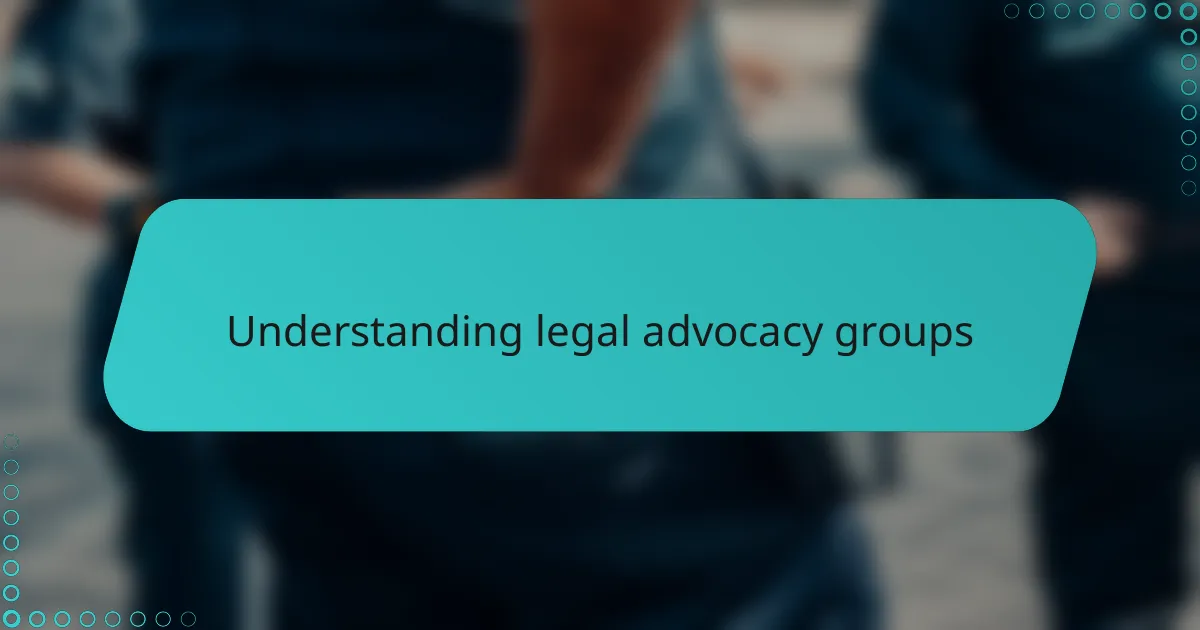
Understanding legal advocacy groups
Legal advocacy groups often serve as the unsung heroes in many communities, fighting tirelessly for justice and fairness. From my experience, these groups aren’t just about law—they’re about people and their stories. Have you ever wondered what drives someone to dedicate their time and energy to causes that often seem uphill battles?
When I first encountered a local legal advocacy group, I was struck by how personalized their approach was. They don’t just handle cases; they listen, empathize, and empower individuals who might otherwise feel voiceless. It made me realize that advocacy is as much about human connection as it is about legal expertise.
What fascinates me most is the diversity in how these groups operate. Some focus on specific issues like housing or civil rights, while others provide broad legal support. This variety ensures that nearly everyone has a potential ally in the complex world of law—something I found both reassuring and inspiring.
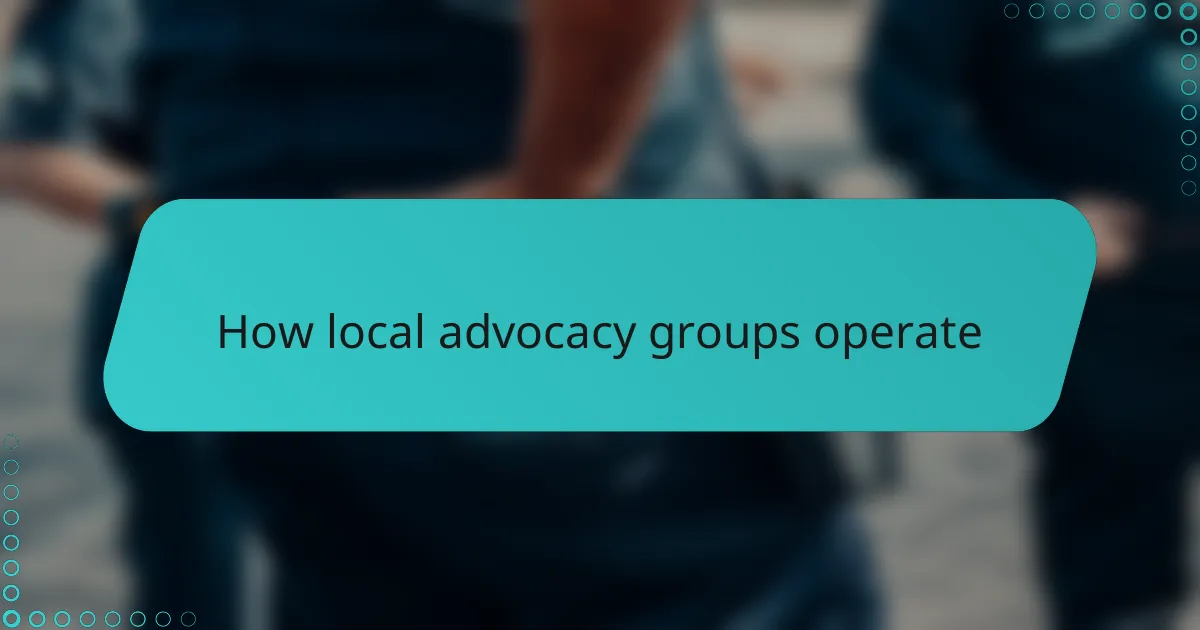
How local advocacy groups operate
Local advocacy groups operate with a remarkable blend of passion and strategy. From my experience, they often start with grassroots efforts—holding community meetings, educating people about their rights, and building trust. I’ve seen firsthand how these small gatherings can spark powerful movements.
What really stood out to me was how they balance thorough legal research with accessible communication. Have you ever sat through a legal briefing that felt like a foreign language? These groups take complex laws and translate them into everyday terms, making the law feel less intimidating and more like a tool for change.
Coordination is key in their operations. Local advocacy groups frequently collaborate with other organizations, volunteers, and even sympathetic lawmakers to maximize their impact. I was amazed at how a single phone call from one group could set off a chain reaction that eventually leads to meaningful policy shifts.
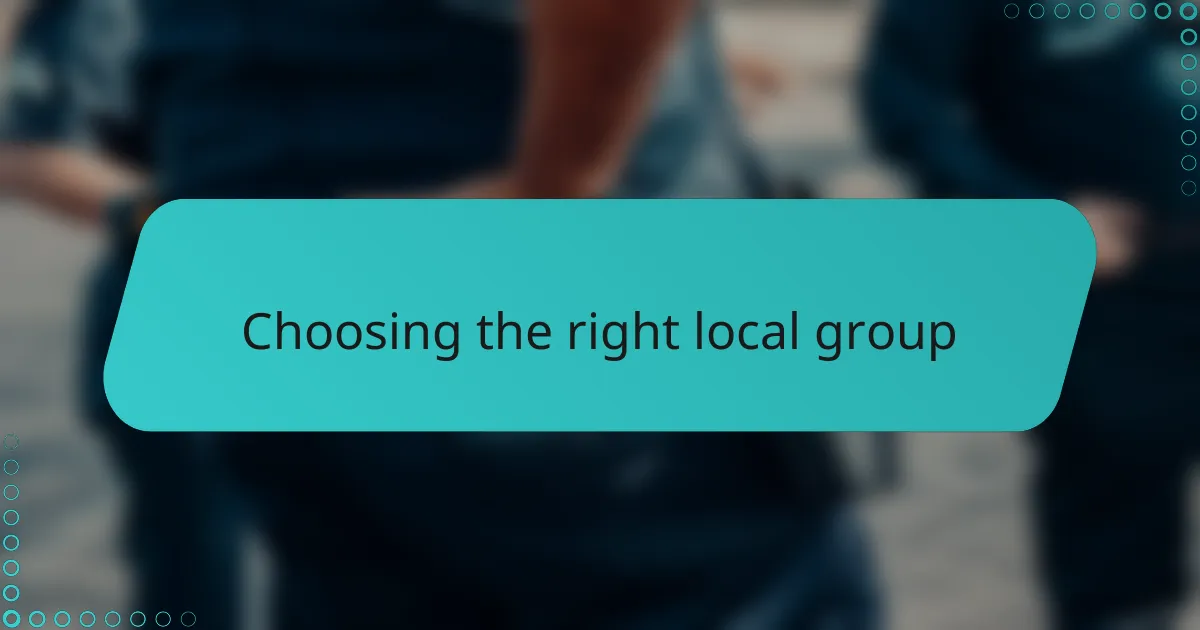
Choosing the right local group
Choosing the right local group felt overwhelming at first—there were so many options, each with different focuses and styles. I asked myself, what issue matters most to me, and does this group’s mission align with that? It helped to dig a little deeper, attend a meeting, and see how they connect with people on a personal level.
What really influenced my choice was observing how approachable and responsive the group was. I remember calling one with a simple question about my rights, and they took the time to listen patiently and explain everything clearly. That moment made me realize that finding a group that values communication can make all the difference.
Have you considered the group’s reputation and track record? From experience, working with a group that has strong community ties and proven results made me feel confident that my concerns wouldn’t just be heard but acted upon. It’s not just about paperwork and meetings—it’s about trust and real impact.
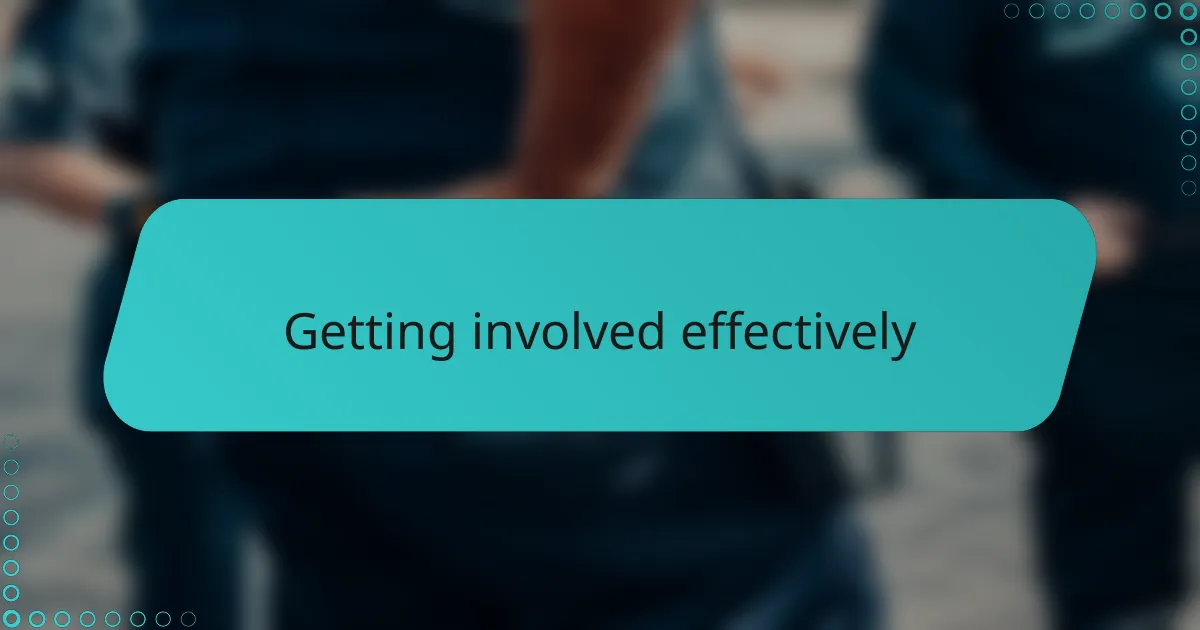
Getting involved effectively
Getting involved effectively isn’t just about showing up—it’s about diving in with intention. I found that asking myself, “Where can I contribute best?” made a huge difference. It pushed me beyond passive attendance to actively volunteering my skills where they mattered most.
From my experience, communication is the cornerstone of meaningful involvement. Have you ever felt lost in a crowd or unsure how your voice fits in? I did, until I started reaching out directly to coordinators, asking thoughtful questions, and sharing my ideas. That helped me feel seen and valued, which in turn fueled my commitment.
It also helped to be patient and consistent. Change and progress in these groups often take time—sometimes frustratingly so. But I learned that small, steady efforts build trust and credibility, and that persistence often unlocks opportunities to make a real difference. Have you noticed how little victories pave the way for bigger ones?
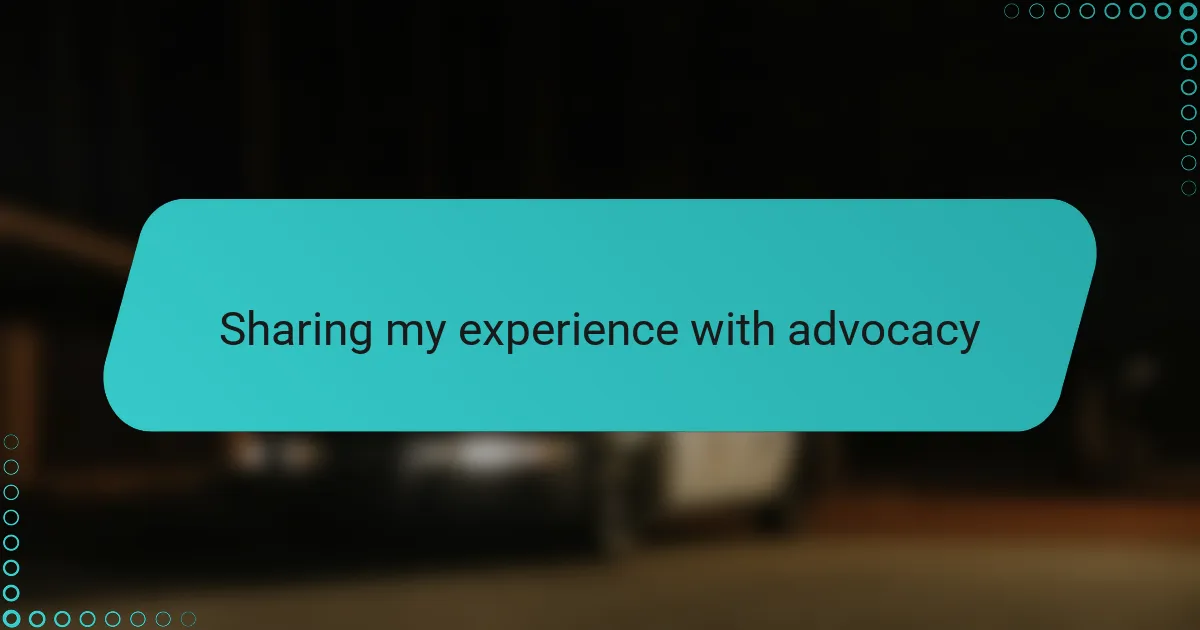
Sharing my experience with advocacy
Sharing my experience with advocacy has been nothing short of transformative. I remember feeling hesitant at first, unsure if my voice would truly matter. But witnessing how personal stories became catalysts for legal change showed me that advocacy isn’t just about broad policies—it’s about individual lives, including mine.
One moment that stayed with me was when I shared my concerns at a local meeting, and instead of brushing me off, the group embraced my story as part of their fight. Have you ever experienced the power of being truly heard? That connection sparked a deep sense of belonging and purpose for me, something I hadn’t anticipated.
Over time, I realized advocacy is as much about patience and resilience as it is about passion. There were days when progress felt slow, and doubts crept in, but recalling those initial moments of genuine engagement reminded me why staying involved was worth every challenge. Have you found that kind of motivation in your own experiences?
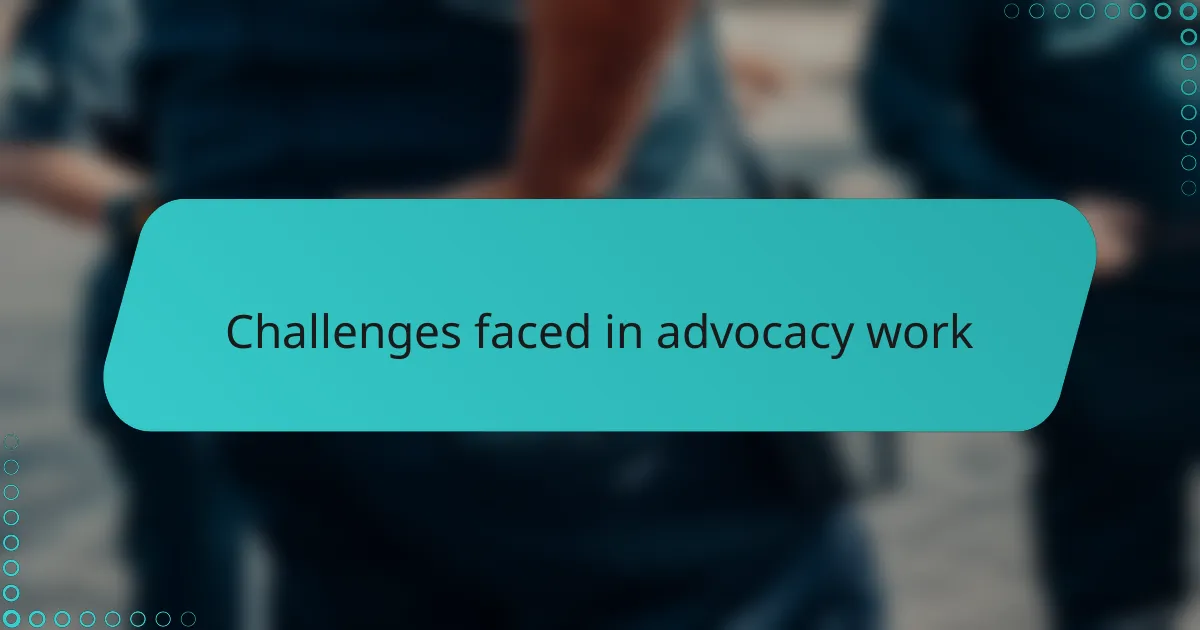
Challenges faced in advocacy work
One challenge that struck me early on was the sheer emotional weight of the stories these groups carry. Listening to people’s struggles—sometimes heartbreaking and complex—can be draining. Have you ever wondered how advocates keep their compassion alive without burning out? I found it takes a delicate balance of empathy and self-care, something I had to learn the hard way.
Another hurdle is navigating the labyrinth of legal procedures and bureaucracy. Even with passionate volunteers, progress can be slowed by paperwork, court dates, and shifting regulations. I often felt frustrated watching how a small victory could get tangled in red tape. Yet, the persistence of these groups reminded me that patience is not passive—it’s a form of strength.
Funding and resources also pose constant obstacles. I was surprised to see how often advocacy groups operate on shoestring budgets, relying heavily on donations and volunteer time. It made me question, how do they sustain such critical work with so little? Their creativity in stretching every dollar and hour truly impressed me—it’s a testament to their unwavering commitment despite real constraints.
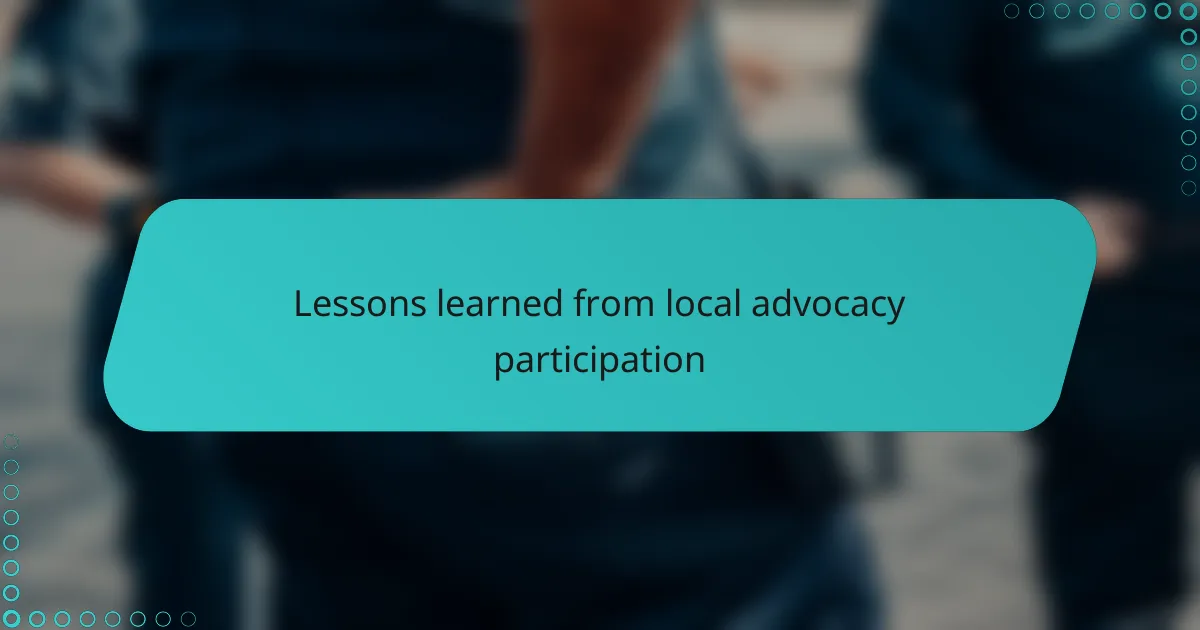
Lessons learned from local advocacy participation
One lesson that really stood out to me was the power of listening. I realized that effective advocacy isn’t just about pushing legal arguments—it’s about genuinely hearing people’s experiences and validating their struggles. Have you noticed how a simple act of attentive listening can shift someone’s entire outlook? For me, that was a turning point in understanding what advocacy truly means.
Another insight came from seeing how patience shapes impact. Progress often felt slow, and there were moments when I questioned if our efforts made a difference. Yet, I learned that persistence, even through small setbacks, creates the foundation for meaningful change. How often do we underestimate the value of steady, quiet work behind the scenes?
Finally, I understood that collaboration is more than a strategy—it’s a lifeline. Working alongside diverse voices not only broadens reach but also strengthens resolve. I remember a particular meeting where different groups came together, and the energy was electric, fueling a fresh wave of hope. Have you experienced how collective effort can transform frustration into action?
